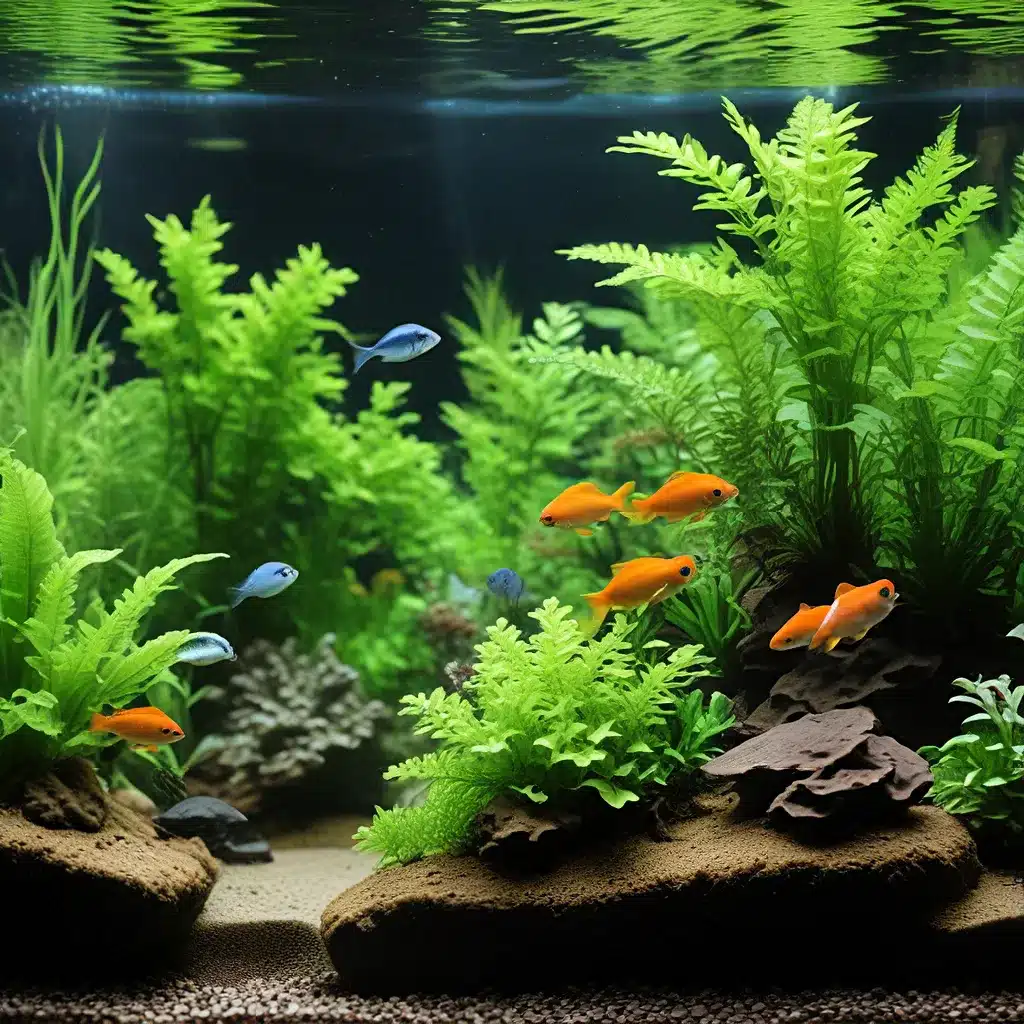
Understanding the Importance of Aquarium Water Quality
Maintaining optimal water parameters is crucial for the health and well-being of your aquarium inhabitants. From the delicate pH balance to the levels of essential nutrients, every aspect of the water chemistry plays a vital role in supporting a thriving ecosystem. In this comprehensive guide, we’ll dive deep into the world of aquarium water parameters, exploring the significance of each factor and equipping you with the knowledge to create and sustain the perfect aquatic environment.
The pH Conundrum: Balancing Acidity and Alkalinity
The pH scale, ranging from 0 to 14, is a fundamental measure of the acidity or alkalinity of your aquarium water. The ideal pH range for most freshwater aquariums typically falls between 6.5 and 7.5, though specific species may thrive in slightly more acidic or alkaline conditions. Monitoring and maintaining the appropriate pH is essential, as significant fluctuations can stress your fish and inhibit the growth of beneficial plants and microorganisms.
Proper lighting, water quality, and nutrient levels are all crucial factors in maintaining vibrant colors in Montipora corals, a popular choice for marine aquariums. By understanding the science behind these captivating creatures, aquarists can create thriving coral ecosystems in their own tanks.
Ammonia, Nitrites, and Nitrates: The Nitrogen Cycle
The nitrogen cycle is a critical biochemical process that governs the transformation of waste products in your aquarium. Ammonia, a highly toxic compound produced by fish and other organisms, must be closely monitored and kept at minimal levels. Beneficial bacteria in the aquarium’s biological filtration system convert ammonia into less harmful nitrites, which are then further broken down into nitrates.
Maintaining an appropriate balance of these nitrogen compounds is essential for fish health and water quality. Regularly testing for ammonia, nitrites, and nitrates, and taking appropriate action to address imbalances, will help ensure the long-term success of your aquarium.
Temperature and Dissolved Oxygen: Striking the Right Balance
Temperature and dissolved oxygen are two interrelated parameters that significantly impact the well-being of your aquatic inhabitants. Different fish species thrive in specific temperature ranges, and sudden fluctuations can cause stress and even mortality. Ensuring adequate water circulation and surface agitation is crucial for maintaining sufficient dissolved oxygen levels, which are essential for the respiration and metabolic processes of your aquarium’s inhabitants.
King Aquarium offers a wide range of aquarium equipment and accessories to help you precisely monitor and control these critical water parameters, allowing you to create a thriving aquatic ecosystem.
Hardness and Alkalinity: Maintaining the Right Balance
Water hardness and alkalinity are closely related measures that describe the mineral content of your aquarium water. The appropriate levels of these parameters can vary depending on the specific fish species and plants you keep, as well as the desired water chemistry. Striking the right balance between hardness and alkalinity is essential for promoting healthy growth, vibrant colors, and the overall resilience of your aquarium’s inhabitants.
Mastering Aquarium Water Testing and Monitoring
Consistent water testing and monitoring are the cornerstones of maintaining optimal water quality in your aquarium. By regularly checking the levels of key parameters, you can quickly identify and address any imbalances before they escalate into more serious issues.
Choosing the Right Testing Kits
When it comes to aquarium water testing, the market offers a wide range of kits, each designed to measure specific parameters. From simple test strips to comprehensive liquid test kits, the choice will depend on your needs, budget, and the level of detail you require. Consider factors such as the number of tests, accuracy, and ease of use to find the testing solution that best suits your aquarium’s needs.
Establishing a Consistent Testing Routine
Establishing a regular water testing routine is crucial for proactively managing your aquarium’s water quality. Depending on the size and complexity of your setup, testing once a week or even more frequently may be necessary, especially during the initial cycling process or when introducing new fish or plants. This diligence will enable you to quickly identify and address any fluctuations in water parameters, ensuring the long-term health and stability of your aquatic ecosystem.
Using Test Results to Inform Water Changes and Maintenance
The data gathered from your water testing regimen should guide your aquarium maintenance routines. Analyze the results to determine the appropriate water change frequency, supplementation of essential minerals, and any necessary adjustments to filtration or other equipment. By tailoring your care practices to the specific needs of your aquarium, you can create an environment that supports the thriving growth and vibrant colors of your aquatic inhabitants.
Putting it All Together: Optimizing Aquarium Water Quality
Maintaining optimal water quality in your aquarium is an ongoing journey, but the rewards are well worth the effort. By understanding the critical role of water parameters, implementing a comprehensive testing and monitoring system, and making timely adjustments to your aquarium’s maintenance, you can create a vibrant, healthy, and sustainable ecosystem that will captivate both you and your aquatic friends.
Remember, the key to success is diligence, patience, and a willingness to learn. As you navigate the intricate world of aquarium water chemistry, embrace the challenges and enjoy the journey of nurturing a thriving aquatic oasis in your own home.

